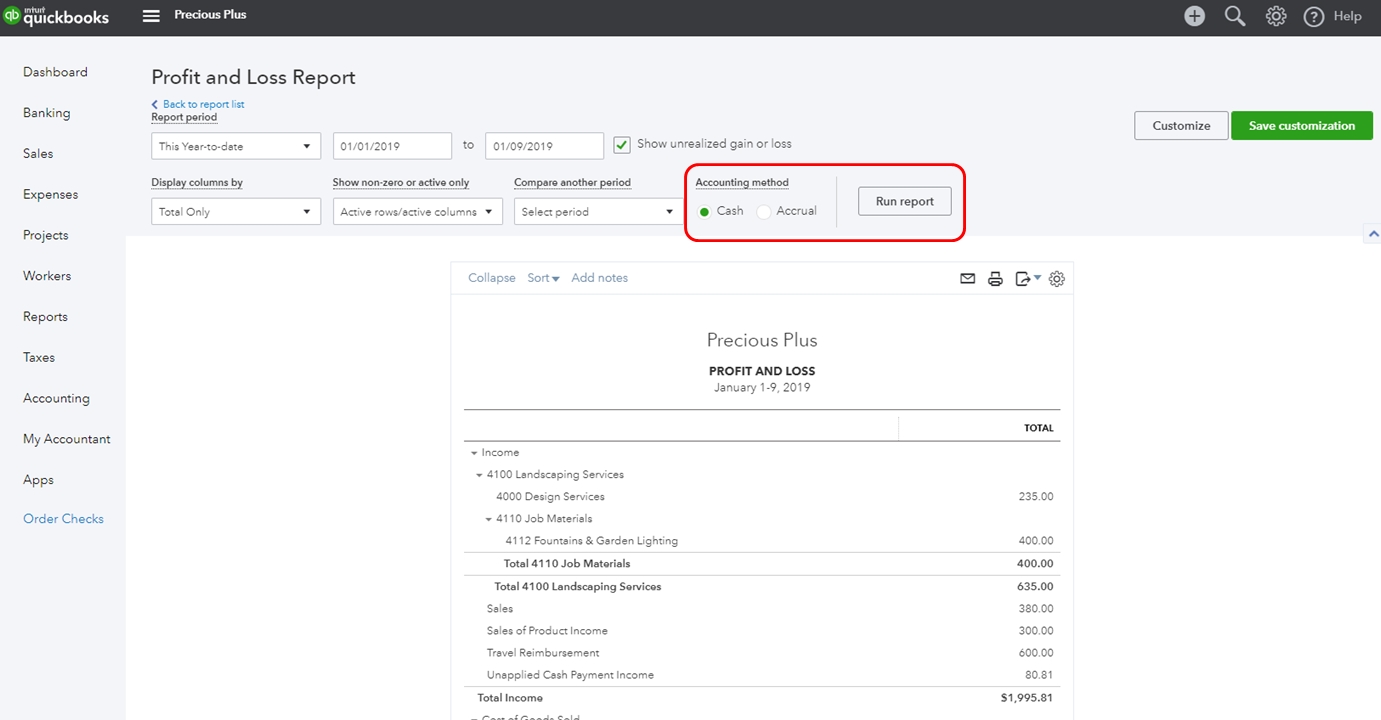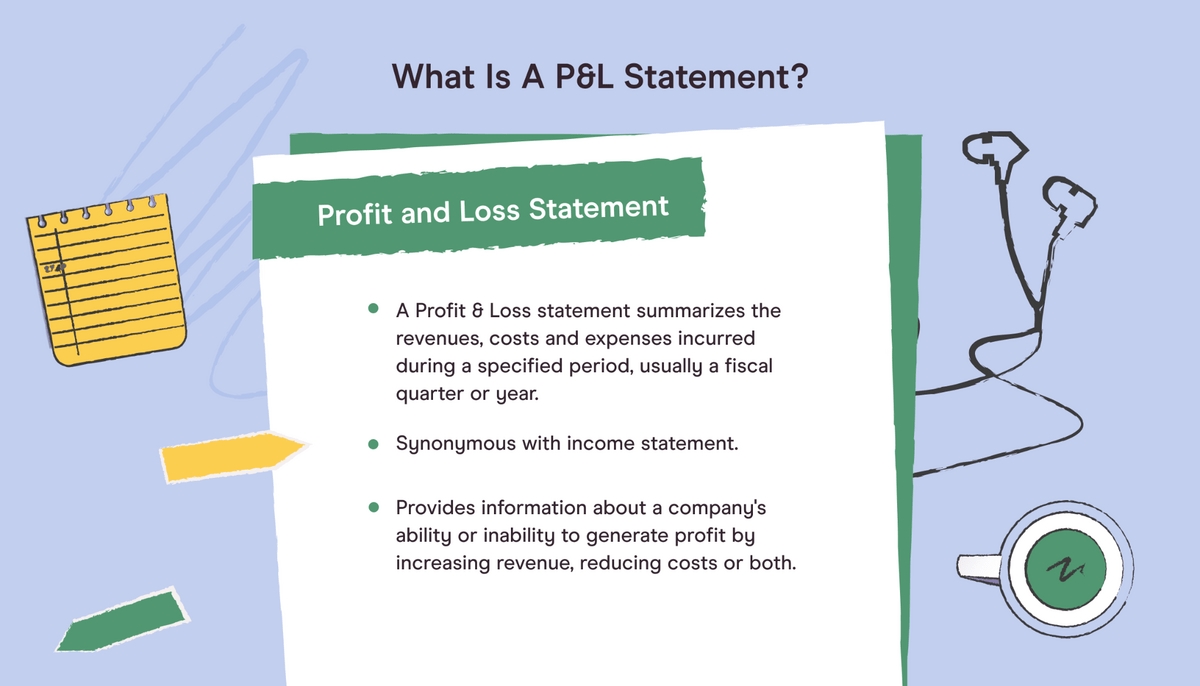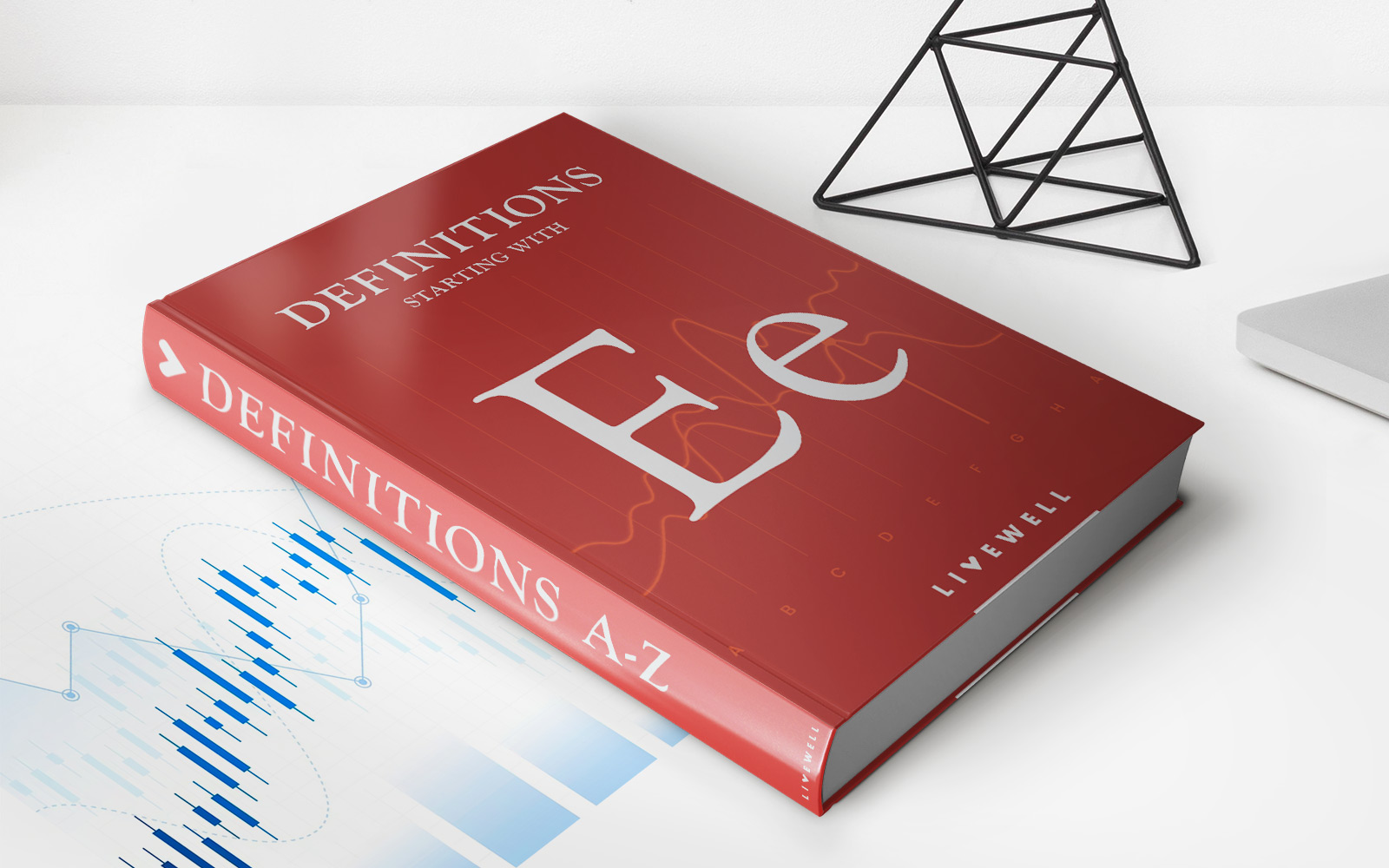

Finance
What Is A Loss Run Report In Insurance
Published: November 23, 2023
Learn what a loss run report is in the realm of finance and how it impacts insurance policies. Understand its significance and usage in the insurance industry.
(Many of the links in this article redirect to a specific reviewed product. Your purchase of these products through affiliate links helps to generate commission for LiveWell, at no extra cost. Learn more)
Table of Contents
Introduction
Insurance plays a crucial role in protecting individuals and businesses from financial losses. When it comes to managing risks and making informed decisions, insurance companies heavily rely on various data and reports. One such report that holds significant importance in the insurance industry is the Loss Run Report.
A Loss Run Report provides a detailed overview of an insured policyholder’s claims history. It serves as a comprehensive record that outlines the history of claims filed, losses incurred, and payments made by the insurance company on behalf of the policyholder. This report plays a vital role in assessing risk, setting premiums, and determining coverage amounts for policyholders.
In this article, we will explore the definition, purpose, components, and importance of a Loss Run Report. We will also discuss how to obtain a Loss Run Report, how it is used in the insurance industry, and its limitations.
Understanding the intricacies of a Loss Run Report is essential for policyholders, insurance agents, and underwriters alike. It provides valuable insights into the claims history of an insured entity, allowing insurance professionals to make informed decisions and manage risks effectively.
Definition of a Loss Run Report
A Loss Run Report, also known as a claims history report, is a document that provides a detailed summary of an insured policyholder’s claims and losses over a specific period of time. It is generated by the insurance company or agent and serves as an essential tool for assessing and analyzing risk.
This report offers a comprehensive overview of the claims filed by the policyholder, including information such as the date of the claim, the type of claim, the amount of the claim, and the status of the claim (whether it has been settled or is still pending). It also includes details on any payments made by the insurance company, deductibles applied, and any reserves set aside for future claims.
Loss Run Reports are typically used by insurers, underwriters, and insurance brokers to evaluate the risk associated with an insured entity. It provides crucial information that helps determine the insurability of a policyholder, set appropriate premiums, and establish coverage terms and conditions.
These reports are essential for insurance professionals as they provide a comprehensive overview of a policyholder’s claims history, allowing them to assess the potential risk, evaluate the frequency and severity of previous claims, and calculate the potential for future losses. This information plays a vital role in the underwriting process and helps insurers make informed decisions about providing coverage to a particular policyholder.
While Loss Run Reports are commonly used in the insurance industry, it is important to note that they may have different formats and terminology depending on the insurance company or jurisdiction. However, the fundamental purpose remains the same – to provide a detailed record of an insured policyholder’s claims history.
Purpose of a Loss Run Report
The primary purpose of a Loss Run Report is to provide a comprehensive and detailed record of a policyholder’s claims history. This report serves several important purposes for both insurance companies and policyholders. Let’s explore the key objectives of a Loss Run Report:
Evaluating Risk: Loss Run Reports are invaluable tools for insurance companies and underwriters in assessing the risk associated with a policyholder. By analyzing the claims history and loss patterns, insurers can determine the likelihood of future claims and estimate potential losses. This information helps insurers make informed decisions regarding premiums, deductibles, and coverage limits.
Determining Coverage: Loss Run Reports play a pivotal role in evaluating the coverage requirements and terms for a policyholder. Insurance companies use these reports to determine the right amount of coverage needed based on the historical loss experience of the policyholder. This ensures that policyholders are adequately protected while minimizing the insurer’s exposure to an excessive level of risk.
Setting Premiums: Loss Run Reports provide crucial data that allows underwriters to calculate appropriate premiums for policyholders. By assessing the frequency and severity of past claims, insurers can accurately estimate the potential future expenses associated with insuring a particular risk. This helps in setting premiums that are fair and reflect the level of risk the policyholder presents.
Claims Management: Loss Run Reports are valuable tools for policyholders in managing their claims effectively. The report serves as a reference for policyholders when filing new claims, ensuring that all previous claims are properly accounted for and not overlooked. It also helps policyholders track the status of existing claims and monitor the payment status from the insurance company.
Risk Mitigation: Loss Run Reports enable policyholders to identify trends and patterns in their claims history. By analyzing the report, policyholders can identify areas of potential risk and take proactive measures to mitigate future losses. This can include implementing safety measures, improving risk management practices, or seeking guidance from insurance professionals to minimize the likelihood of future claims.
Overall, the purpose of a Loss Run Report is to provide a transparent and comprehensive overview of a policyholder’s claims history. It serves as a vital tool for insurance companies, underwriters, and policyholders in assessing risk, determining coverage, and managing claims effectively.
Components of a Loss Run Report
A Loss Run Report contains several important components that provide a detailed overview of a policyholder’s claims history. These components help insurance professionals and policyholders better understand the nature and extent of past claims. Here are the key components typically included in a Loss Run Report:
- Policy Information: This section includes details about the policyholder, such as the name, address, policy number, and effective dates of coverage. It provides a basic overview of the insured entity and serves as a reference for identifying the specific policy under consideration.
- Claim Information: This section provides a comprehensive list of all claims filed by the policyholder. Each claim listed includes essential details such as the date of the claim, the type of claim (property damage, bodily injury, etc.), and a description of the incident or occurrence that led to the claim. This information helps insurers and policyholders evaluate the nature and severity of the claims.
- Claim Status: This component outlines the current status of each claim. It indicates whether a claim is open, closed, or under investigation. In some reports, additional information may be provided regarding the progress of the claim and any pending settlement negotiations or legal proceedings.
- Claim Payments: This section details the payments made by the insurance company in relation to each claim. It includes the date of payment, the amount paid, and a breakdown of the various components of the payment, such as expenses, settlements, or judgments. This information helps track the financial impact of the claims on the insurer and policyholder.
- Deductibles and Reserves: Loss Run Reports also include information about any deductibles applied to the claims and the amount that the policyholder is responsible for paying. Additionally, this component may include details about reserves set aside by the insurance company for future claim payments or anticipated expenses.
- Loss Ratio: Some Loss Run Reports may provide a loss ratio, which is the ratio of claims paid by the insurance company to the premiums collected. This metric is often used as a measure of the insurer’s financial performance and risk exposure. A high loss ratio may indicate a higher level of risk associated with the policyholder.
The specific components and format of a Loss Run Report may vary depending on the insurance company, jurisdiction, and type of insurance. However, these elements provide the foundation for the comprehensive assessment of a policyholder’s claims history and serve as a valuable tool for risk evaluation and decision-making in the insurance industry.
Importance of a Loss Run Report
A Loss Run Report holds significant importance for both insurance companies and policyholders. It serves as a valuable source of information that helps assess risk, determine coverage terms, and manage claims effectively. Let’s explore the key reasons why Loss Run Reports are crucial in the insurance industry:
Risk Assessment: Loss Run Reports provide detailed insights into a policyholder’s claims history, enabling insurance companies and underwriters to assess the level of risk associated with insuring that entity. By analyzing the frequency, severity, and types of past claims, insurers can better understand the potential for future losses. This information helps in setting appropriate premiums, deductibles, and coverage limits, ensuring that the policyholder is adequately protected while managing the insurer’s exposure to risk.
Underwriting Decisions: Loss Run Reports play a vital role in the underwriting process. Insurance underwriters rely on these reports to evaluate the risks associated with providing coverage to a particular policyholder. By analyzing the claims history, underwriters can make informed decisions regarding the insurability of the entity, determine appropriate policy terms and conditions, and calculate the premiums that accurately reflect the level of risk involved.
Claims Management: For both insurance companies and policyholders, Loss Run Reports are valuable tools in managing claims effectively. Insurance professionals can refer to these reports when processing new claims, ensuring that all relevant information is considered. Policyholders can also use the report as a reference to track the progress of existing claims and ensure that any outstanding payments or settlements are properly accounted for. This helps streamline the claims process and ensures that all parties involved have a clear understanding of the policyholder’s claims history.
Fraud Detection: Loss Run Reports can help identify potential fraudulent activities. By examining the claims history and patterns, insurance companies can identify suspicious or abnormal claim activities, such as frequent claims for the same type of loss, inflated claim amounts, or suspicious timing of claims. Detecting fraud early on prevents financial losses for insurers and helps maintain the integrity of the insurance system.
Loss Control Measures: Loss Run Reports also provide valuable insights for policyholders to implement loss control measures. By analyzing the claims history, policyholders can identify recurring loss patterns and take proactive steps to mitigate future risks. This may include implementing safety protocols, improving risk management practices, or seeking advice from insurance professionals to minimize the likelihood of claims.
Overall, Loss Run Reports are an essential tool in the insurance industry. They provide crucial information for risk assessment, underwriting decisions, claims management, fraud detection, and loss control. Both insurance companies and policyholders rely on these reports to make informed decisions, manage risks effectively, and ensure the smooth operation of insurance policies.
How to Obtain a Loss Run Report
Obtaining a Loss Run Report is a relatively straightforward process, but it may vary slightly depending on the insurance company and the jurisdiction. Here are the general steps to follow when obtaining a Loss Run Report:
- Contact your Insurance Agent or Broker: The first step is to reach out to your insurance agent or broker. They are the primary point of contact for obtaining a Loss Run Report. Provide them with your policy details, such as the policy number and effective dates, to help them locate your information accurately.
- Submit a Written Request: In most cases, the insurance agent or broker will require a written request for a Loss Run Report. This request can be submitted via email, mail, or fax. Include your policy details, full name, contact information, and any specific time frame for the report (if applicable).
- Provide Authorization: Some insurance companies may require written authorization from the policyholder to release the Loss Run Report. This is typically done to protect the privacy and confidentiality of the policyholder’s information. If requested, provide the necessary authorization form along with your request.
- Follow-up and Confirm: It’s essential to follow up with your insurance agent or broker to ensure that your request for a Loss Run Report has been received and processed. Confirm the expected timeline for receiving the report and inquire about any additional steps or requirements.
- Review the Report: Once you receive the Loss Run Report, carefully review it to ensure the accuracy of the information. Check that all claims are accounted for and that the details align with your recollection of past claims. If you notice any discrepancies or have any questions, contact your insurance agent or broker for clarification.
Note that the availability and specific process for obtaining a Loss Run Report may vary depending on your insurance company and jurisdiction. Some insurance companies may provide online portals or customer service hotlines for policyholders to request Loss Run Reports, while others may require more manual processes. It’s important to follow the specific instructions provided by your insurance agent or broker and reach out to them for any assistance or guidance during the process.
By following these steps and working closely with your insurance agent or broker, you can obtain a Loss Run Report to gain insights into your claims history and make informed decisions about your insurance coverage.
Understanding a Loss Run Report
Understanding a Loss Run Report is essential for policyholders, insurance professionals, and underwriters. It provides valuable insights into the claims history of an insured entity and helps in assessing risk, evaluating coverage, and managing claims effectively. Here are some key points to consider when interpreting a Loss Run Report:
- Claims Details: The report will include specific details about each claim filed by the policyholder. Pay attention to the date of the claim, the type of claim (e.g., property damage, bodily injury), and a brief description of the incident. This information gives a snapshot of the nature and variety of past claims.
- Claim Status: Each claim listed in the report will have a status indicating whether it is open, closed, or being investigated. Understanding the claim status helps in determining the progress of the claims and whether they have been resolved or are still being processed.
- Claim Payments and Deductibles: The report will provide information on claim payments made by the insurance company. Pay attention to the amount paid for each claim and any deductibles applied. This information allows policyholders to track the financial impact of the claims and understand their financial responsibilities.
- Reserves: Loss Run Reports may include reserves set aside by the insurance company for future claim payments or anticipated expenses. Reserves indicate the estimated cost associated with open or pending claims. Understanding the reserve amounts helps policyholders gauge the potential future financial impact of these claims.
- Trends and Patterns: Analyzing the Loss Run Report can help identify any trends or patterns in the claims history. Look for recurring types of claims or frequent claims within a specific time frame. Identifying these trends can help policyholders implement appropriate risk management strategies to mitigate future losses.
- Loss Ratio: Some Loss Run Reports include a loss ratio, which is the ratio of claims paid by the insurance company to the premiums collected. A high loss ratio may indicate a higher level of risk associated with the policyholder. Understanding the loss ratio helps policyholders assess their claims experience in relation to the premiums paid.
It is important to remember that Loss Run Reports may differ slightly in format and terminology depending on the insurance company or jurisdiction. If there are any terms or sections that are unclear, reach out to your insurance agent or broker for clarification. They can provide insights and interpretation specific to your policy and claims history.
Overall, understanding a Loss Run Report empowers policyholders and insurance professionals to make informed decisions about risk management, coverage, and claims. By analyzing the information presented in the report, policyholders can gain valuable insights into their claims history and take proactive measures to minimize future losses.
How Loss Run Reports are Used in Insurance
Loss Run Reports play a crucial role in the insurance industry and are extensively used by insurance companies, underwriters, and insurance agents. These reports provide valuable information that helps assess risk, set premiums, determine coverage terms, and effectively manage claims. Let’s delve into the various ways in which Loss Run Reports are used in insurance:
- Risk Assessment: Loss Run Reports are a valuable tool for assessing the level of risk associated with insuring a policyholder. Insurance companies and underwriters use these reports to analyze the frequency, severity, and nature of past claims. This information helps in evaluating the likelihood of future claims and estimating potential losses. It aids underwriters in determining appropriate premiums, coverage limits, and deductibles, ensuring that the policyholder is adequately protected while managing the insurer’s exposure to risk.
- Premium Calculation: Loss Run Reports play a crucial role in setting premiums for policyholders. By evaluating the claims history, insurers can estimate the potential future expenses associated with insuring a particular risk. This data helps in determining the appropriate premium amounts that accurately reflect the level of risk presented by the policyholder. Higher claims history and loss experience may result in higher premiums, whereas a clean claims history can lead to lower premiums.
- Underwriting Decisions: Loss Run Reports are an essential tool in the underwriting process. Insurance underwriters rely on these reports to evaluate the risks associated with providing coverage to a particular policyholder. The claims history, including the types and frequency of past claims, helps underwriters make informed decisions about insurability, policy terms and conditions, and appropriate coverage limits. This information ensures that the underwriting process is fair and accurate.
- Claims Management: Loss Run Reports are invaluable for effectively managing claims. Insurance professionals refer to these reports when processing new claims, as they provide a complete picture of the policyholder’s claims history. The reports help in verifying the accuracy of the claims, identifying any recurring patterns or fraudulent activities, and streamlining the claims process. Policyholders can also use the reports to track the status of existing claims and monitor the payment status from the insurance company.
- Fraud Detection: Loss Run Reports aid in the detection of potential fraudulent activities. By analyzing the claims history, insurance companies can identify suspicious or abnormal claim patterns, such as frequent claims for the same type of loss or unusually high claim amounts. Detecting fraudulent claims early helps prevent financial losses for insurers and safeguards the integrity of the insurance system.
- Loss Control: Loss Run Reports provide valuable insights for implementing loss control measures. Analyzing the claims history allows policyholders and insurance professionals to identify recurring loss patterns and take proactive steps to mitigate future risks. This may include implementing safety measures, improving risk management practices, or seeking guidance from insurance professionals to minimize the likelihood of future claims.
Loss Run Reports serve as a comprehensive record of a policyholder’s claims history and are utilized at various stages of the insurance process. From underwriting decisions to premium calculation, claims management, fraud detection, and loss control, these reports are a crucial tool for insurance professionals and policyholders to make informed decisions and effectively manage risks.
Limitations of a Loss Run Report
While Loss Run Reports provide valuable insights into a policyholder’s claims history and are widely used in the insurance industry, it is important to recognize their limitations. Understanding these limitations is essential to ensure a comprehensive and accurate assessment of a policyholder’s risk profile. Here are some key limitations of Loss Run Reports:
- Incomplete Claims History: Loss Run Reports only capture claims filed with the specific insurance company or within a particular timeframe. They may not reflect claims history with other insurers or claims that were settled without involving the insurance company. Therefore, the report may not present a complete picture of the policyholder’s claims history.
- No Contextual Information: Loss Run Reports provide details of claims, such as dates, types, and amounts, but they do not provide contextual information for each claim. The reports may not include information about liability, fault, or circumstances surrounding the claims. This lack of context can make it challenging to fully assess the severity and potential impact of each claim.
- Timing of Reporting: Loss Run Reports are generated at a specific point in time, and claims filed after the report’s generation date may not be included. If a policyholder has recently filed a claim, it may not appear in the report. Therefore, relying solely on one report might not provide the most up-to-date view of the policyholder’s claims history.
- No Claim Settlement Details: Loss Run Reports typically provide information on claim payments made by the insurance company but may not include the specific details of each settlement. The reports may not provide insights into settlement negotiations, judgments, or any ongoing legal disputes related to the claims.
- Lack of External Data: Loss Run Reports rely solely on internal claims data from the issuing insurance company. They do not incorporate external data sources or industry-wide claims data. This limitation can restrict the comparison of a policyholder’s claims experience against industry benchmarks or similar entities.
- Changes in Risk Profile: Loss Run Reports highlight past claims history but do not account for changes in a policyholder’s risk profile. A policyholder’s claims experience may have improved over time due to enhanced risk management practices or changes in business operations. However, such improvements may not be evident in the Loss Run Report, which solely focuses on historical claims.
Policyholders and insurance professionals should consider these limitations when interpreting Loss Run Reports. It is crucial to supplement the information provided in the reports with additional data, such as external industry benchmarks, updated claims information, and a thorough understanding of the policyholder’s risk management initiatives. This comprehensive approach ensures a more accurate assessment of a policyholder’s risk profile and helps in making informed decisions about coverage, premiums, and risk mitigation strategies.
Conclusion
Loss Run Reports are invaluable tools in the insurance industry, providing a comprehensive overview of a policyholder’s claims history. These reports serve several important purposes, including risk assessment, premium calculation, underwriting decisions, claims management, fraud detection, and loss control. Understanding the components of a Loss Run Report and how to interpret them is essential for policyholders, insurance professionals, and underwriters.
However, it is important to recognize the limitations of Loss Run Reports. They may not capture a complete claims history, lack contextual information, and may not include the most up-to-date data. Additionally, these reports do not consider external data sources or account for changes in a policyholder’s risk profile over time. Therefore, it is crucial to supplement Loss Run Reports with additional data and a comprehensive understanding of the policyholder’s risk management initiatives.
Policyholders should work closely with their insurance agent or broker to obtain Loss Run Reports and review them carefully for accuracy. Understanding the claims history presented in the reports enables policyholders to make informed decisions regarding coverage, manage claims effectively, and implement loss control measures.
Insurance professionals and underwriters rely on Loss Run Reports to assess risk, determine premiums, and make underwriting decisions. These reports provide critical insights that help insurers evaluate the likelihood of future claims, estimate potential losses, and ensure appropriate coverage and pricing for policyholders.
In conclusion, Loss Run Reports serve as a valuable tool in the insurance industry, offering vital information that aids in risk assessment, decision-making, and claims management. By understanding and utilizing Loss Run Reports effectively, insurance professionals and policyholders can navigate the complexities of risk management and insurance coverage, ultimately enhancing the stability and success of the insurance industry as a whole.














